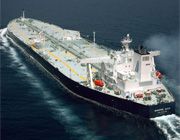
The first sale of crude oil from the U.S. Strategic Petroleum Reserve since Hurricane Katrina may curb demand on the tanker industry’s biggest trade route and drive
shipping rates to the lowest in at least 14 years.
The 30 million barrels of crude may replace imports from Saudi Arabia, the largest contributor to global tanker demand. Supertanker rates will average $11,000 a day for a year or more, the lowest since at least 1997, said Andreas Vergottis of Tufton Oceanic Ltd., which manages the world’s biggest shipping hedge fund. Forward freight agreements, traded by brokers and used to bet on future transport costs, are pricing in a fourth-quarter average of $20,705, data compiled by Bloomberg show.
While the U.S. release, and about 30 million barrels more from other International Energy Agency members, may help contain oil prices that rose 34 percent in a year, it also creates more pain for tanker owners already contending with a glut of vessels that caused rental income to slump 87 percent. Frontline Ltd., the biggest supertanker operator, needs $29,700 a day to break even and the company will report its biggest annual loss since 2002, analysts’ estimates compiled by Bloomberg show.
“It’s another straw on the camel’s back for tanker owners,” said Vergottis, the Hong Kong-based research director who correctly predicted a slump in tanker rates more than a year ago. “I’m becoming more bearish on demand.”
Owners are already paying clients to hire their ships on the Saudi Arabia-to-U.S. route, a journey of about 70 days, according to the London-based Baltic Exchange, which publishes rates for more than 50 maritime routes.
Customers still meet some fuel costs, which can exceed $50,000 a day, making it a cheaper option than sailing empty for owners wanting to move vessels into more profitable regions.
Source: Alaric Nightingale, Bloomberg
We use cookies to improve your experience. By continuing to use our site, you accept our Cookies, Privacy Policy,Terms and Conditions. Close X